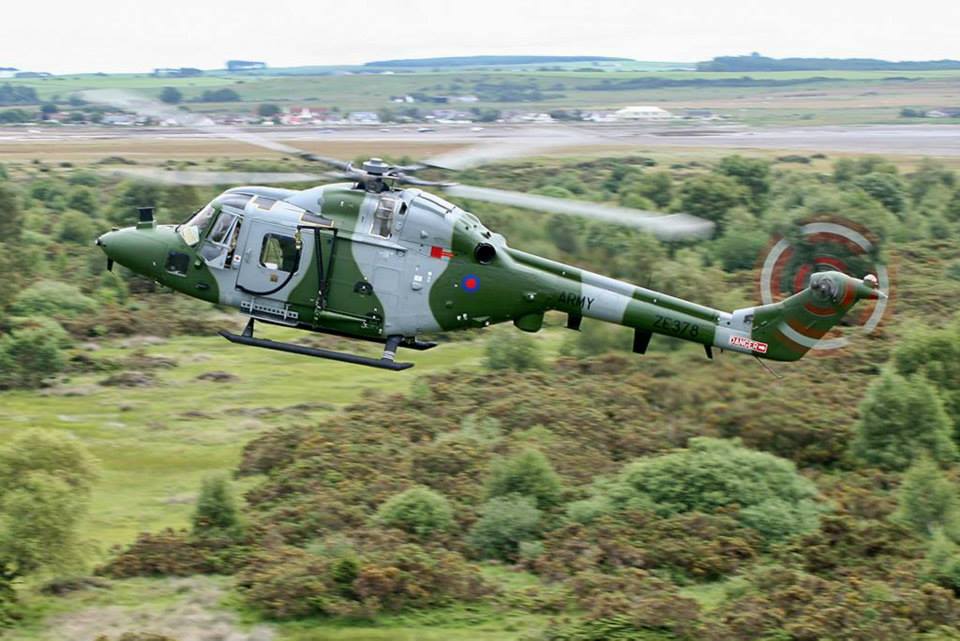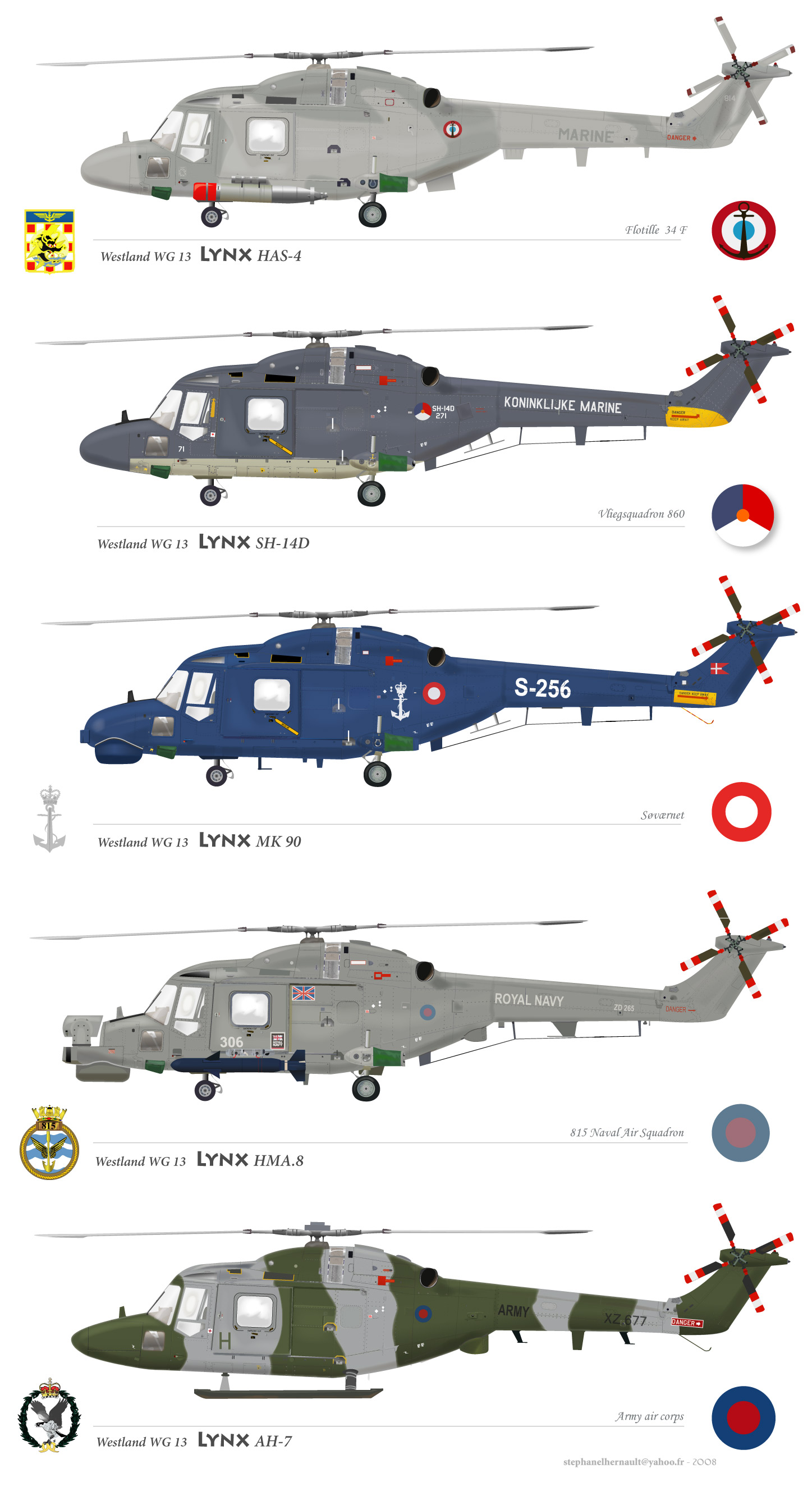
14 Nov Lynx: The British tank’s killer
Lynx: The British tank's killer
Eight tow missiles, a system of simple but very precise navigation, remarkable maneuverability and high speed: these are some of the main characteristics that make a Lynx helicopter tank of high quality. The fact that this device has been very little exported holds mainly to political imperatives.
It is only a very recent time that appeared heavily armed and rotary wing shield able to conduct attack missions. So far, most of the combat helicopters built in Europe benefited from transport capacity, and they would be gone unnoticed on commercial machines. Some of this aircraft can operate over both the land from the sea. This and the case of Westland WG.13 Lynx.
Having the same cell and the same dynamic systems that the infantry Lynx, the navalized Lynx has a different avionics and armament. Its origins date back to a specification of the British Army, which included 135 of the 364 Lynx ordered as of 1 January 1994. The main factors contributing to the lynxes its final configuration, we find the wish of the British military that such a device can be transported aboard a Hercules after being partially dismantled. Lynx presents itself as a small-sized machine unsightly, the engines are mounted above the cabin and back to the rotor shaft. During the sixties, while the design of the unit was well advanced, the first lessons of the Viet-Nam war confirmed that the use of two engines was an essential element of survivability above the field battle. In case of destruction of one of these engines, allowed a aircraft in difficulty to regain its base.
The GSOR 3335 specification
The Lynx was to be equipped departing two Pratt & Whitney Canada PT6A operating a main rotor 13.41 m in diameter, but the agreement France-British concluded in 1967 changed all that. France has agreed to buy was Lynx on behalf of its navy, provided, however, that the diameter of the main rotor does not exceed 13 meters, and to allow the storage of aircrafts in hangars boats.
The PT6A not covenant this new technical guidance, Rolls-Royce proposed his Turbomoteur BS.360, which developed an output of 900 hp. Later known under the name of Gem, this engine was combined with a rigid rotor and a new gearbox. The result was reflected in a compact propulsion system, simplified maintenance, and subject to low power losses.
As such, the helicopter was responding perfectly Ground staff operational requirement (GSOR) 3335, published in June 1966 and on an aircraft capable of carrying 12 troops wounded lying or 3 and 3 others sitting. Another version was planned which was to answer a request on France-UK armed helicopter two-seater with two 20 mm guns in the nose turret and other weapons on the wing stumps.
his variant, however, was never realized, and armament consists of machine guns or 20mm cannon was assigned to a machine where it was to be placed in the recesses of the cabin doors. We had to wait a decade for the increased firepower.
The Lynx prototype took the air March 21, 1971 and was followed by a copy of development-oriented utility for the Army. After some modifications appeared Lynx AH Mk1, whose exemplary pemier flew 11 February 1977. The main feature of the ground Lynx is its lander with tubular runners, while the naval version has a gear train less adapted to methods of pretty brutal tactical landing of the army.
It is provided with the same very precise tactical navigation system that consists of a Decca TANS associated with Decca 71 Dopler and Sperry gyrocompass GM9. The pilot, who was seated in the right seat, benefited from a system of automatic stabilization on three axes, and the unit can receive optional automatic GEC Avionics flight control system. Thanks to these facilities, the Lynx has fairly good capacity anytime.

An advanced rotor
The four-bladed rotor Lynx presents an aerodynamic curved section. Blades, interchangeable, have a spar and a leading edge of stainless steel, and a body Nomex. On August 11, 1986, the helicopter used by Westland for the purposes of demonstration (G-LYNX) with a BERP rotor (British Experimental Rotor Program), an injection system water-methanol and tail Westland 30, establishes a record the flying world speed 400.86 km / h, the last dated record having been assigned to a Mil amended on September 28, 1978, with 368.36 km / h.
The main rotor of the Lynx can be manually folded for ease of storage in tight spaces. Below the head of the rotor, titanium is the main gear. The latter consists of two floors, with spiral bevel gear teeth and a conventional gear that makes it robust. The engine of the regime, which is 6150 rev / min, is reduced to 326 rev / min at the principal rotor thanks to this high-tech reducer. Each Turbomotor has a control system which can control the speed of the rotor. The driver is thus able to select the speeds during the different phases of flight, without having to constantly use the throttles.
In case of a fault with an engine, the other automatically takes a regime corresponding to maximum power. The two engines are mounted Lynx side by side above the bunker equipment, and are powered by crashworthy fuel tanks. The power of the aircraft, powered initially by Gem Mk 2 was increased to 1120 hp with the Gem Mk 41, which has a compressor modified to increase the 10% air flow and can operate at higher temperatures. In 1983 appeared the Gem Mk 43, whose power is 1135 hp and benefited from a system electronic fuel supply.
Since the Lynx AH Mk1 is grafted on, the maximum mass of aircraft has been increased from 4310 to 4350 kg. The Lynx AH Mk 5, which is equipped Gem 41 engines and a reducer three gables, has a maximum weight of 4350 kg and the Lynx AH Mk 7, do, t the development has been undertaken as part of the specification GSOR 3947, has an upper mass of 4800 kg. This version has a tail rotor rotating in the opposite direction to that of a rotor rotors of previous versions. This allows you to reduce the noise level and facilitates hover with heavy loads, two very useful features for the antitank.
In terms of structure, all Lynx are alike. The fuselage and tail boom are semi-monocabine construction and are made of light alloys. Access doors, however, are fiberglass, which is also the case of the leading edge of the vertical stabilizer and reducer fairing tail rotor.In the inside of the main cabin were set up seats on which can sit ten armed soldiers; otherwise, the aircraft can carry a freight load of 900 kg. The volume is available at the rear of 5.21 m3 and loading is done by large sliding doors on each side of the cabin. Lynx can carry a load of about 1350 kg suspended at the extremity of a sling.
- Rolls Royce proposed¹ engines for the Lynx since 2009
Operating in Germany
When it entered service with the British forces in Germany, in August 1978, the Lynx helicopter was to be used as a utility. Set up in squadrons equiped Westland AH Mk 1 Scout armed with anti-tank missiles Aerospatiale SS11, Lynx should support rather than replace these machines. The UK provoked many reactions among its European partners in mid-1977 by pronouncing in favor of anti-tank missile Hughes BGM-71A Tow instead of HOT regard to the main armament of the Lynx. Delivery of Tow began in 1980 and the first shots took place February 20 of the same year, in the Salisbury Plain.
According to an agreement with the United States, a consortium under the aegis of BAe acquired the license to manufacture a version of the Hughes roof viewfinder used under the name M65 by the US Army . This viewfinder bears no British label precise, Hughes refused to consider that the proposed BAe. In April 1981, the 654 Squadron, based in Germany Federal, took delivery of the first Lynx / Tow and at the end of the same year, five anti-tank units (squadrons 661, 662, 663, 664 and 669) Scout had exchanged against new helicopters, 60 aircrafts with the Hughes roof viewfinder. A total of 130 copies were to be produced for the Army Air Corps.
The Tow is a heavy anti-tank missile that benefited from a range of 3700 m and displays a speed of 1000 km / h. The machines of this type are installed in sets of four units in tubes attached to the lateral towers. In addition, the Lynx can carry eight cabin spare missiles, so he can leave the combat zone and earn a sector to recharge its missile tubes.


No Comments